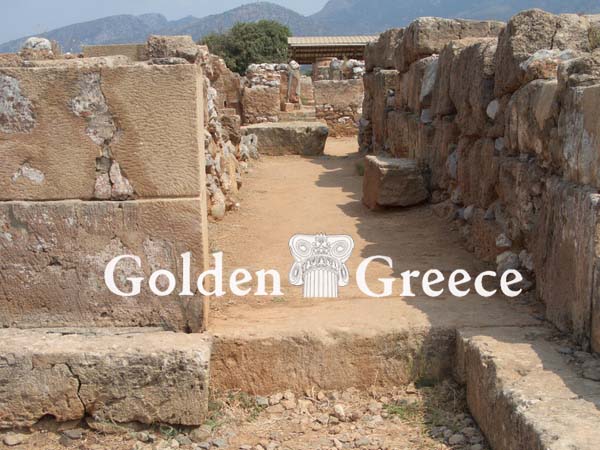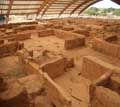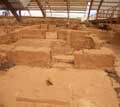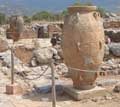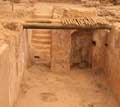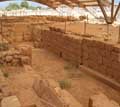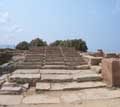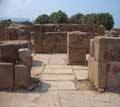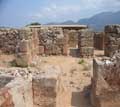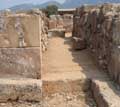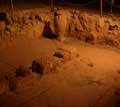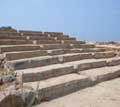
To the east of Malia is a Minoan palace. In the entire area there was a city in ancient times, with an unknown name today. In the archaeological writings it is listed as the palace of Malia. The area is today called Tarmaros and it is believed that this name is related to the name of the ancient city. Also, it is considered that the ancient king Sarpidon, son of Zeus and Europa, lived in the city. Sarpedon was expelled by his brother Minos and found refuge in Lycia in Asia Minor. The palace is considered to have been rebuilt at the time of the construction of the palaces of Knossos and Phaistos and followed their fate. About 1700 BC destroyed by unknown cause, then rebuilt and destroyed again in 1450 BC. The site continued to be inhabited, although the palace was not rebuilt. To the west of the palace at the Marmara site, an early Christian basilica was discovered. A marble sarcophagus was found there.
Mansion of the Lilies
At the foothills east of the hills of Paliochora was the Palace of Lilies, a two-story building consisting of 17 rooms overlooking the sea, which functioned in the Minoan period as the seat of a local lord or high priest. From the second floor of the building comes the famous fresco of white lilies exhibited in the museum of Heraklion.
The Sanctuary of Zeus Thenatas
On the north-western side of the hill of Paliochora, the ruins of the sanctuary of Zeus Thenatas are preserved, which was founded on the site of a large Minoan building and was used from the Proto-Geometric to the Roman era. In the Sanctuary that was dedicated to Zeus Thenata, a nickname produced by the city of Thenai, many remarkable tributes were found, among which two excellent eagles made of porolith that are kept in the museum of Heraklion.
Editor: Fotini Anastasopoulou


